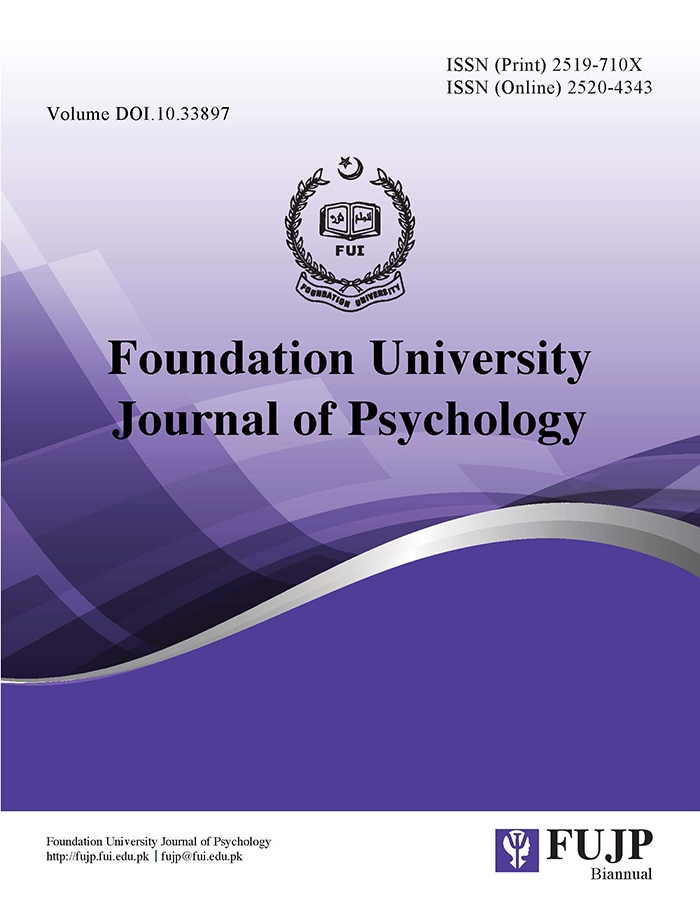Religious Identity Formation and Development in Adolescents of Pakistan
DOI:
https://doi.org/10.33897/fujp.v5i1.216Keywords:
adolescents, religion identity, identity formation, thematic analysis, semi- structured interviewAbstract
Objective and Method. To explore the formation and development of religious identity in
Pakistani adolescents, a qualitative approach was used to analyze the data, collected from nine
adolescent boys and nine adolescent girls of age ranged between 15-17 years (M = 15.8, SD =
.81). These adolescents were students of grade 9-10, and were sampled from different cities of
Pakistan. Data were collected via a semi-structured interview schedule, adapted from the ego
identity interview guideline by Marcia (1966).
Analyses. Thematic analysis was applied to generate and cluster themes appeared in the
transcribed interviews of 18 participants.
Results. The results revealed that religious identity was formed on three rudiments: belief,
behavior, and belongingness. All the participants appeared to be at the foreclosure state of
religious identity, and the religious identity appeared to be developed through seven channels:
parental influence, the role of grandparents, peer influence, religious preachers, media,
teachers’ power, and personal preferences.
Conclusion. This paper provides theoretical and practical implications for the religious
identity development of adolescents in Pakistan.


.jpg)

